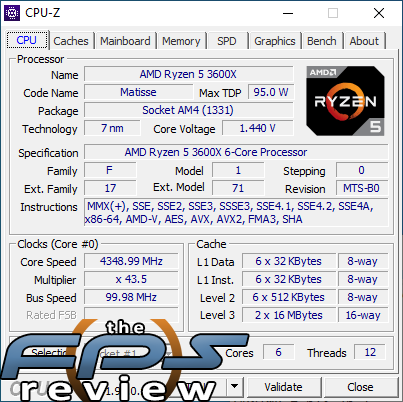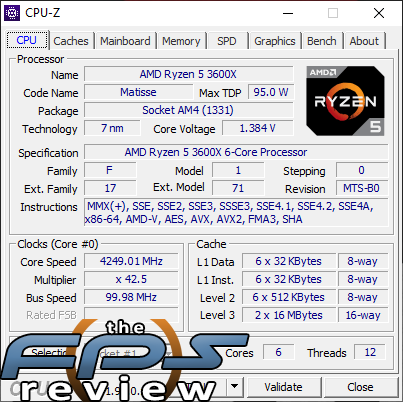Boost Clocking and Temperatures
As much as I hate to do it, this issue is again worth mentioning. Fortunately, at the time of the testing, a new BIOS was available for our MSI MEG X570 GODLIKE motherboard. Version 1.5 was used which used AMD’s AGESA code version 1.0.0.3ABB. This is specifically the version that addresses boost clocks. Now, I did actually test the CPU initially on the older 1.0.0.3AB AGESA code. The CPU didn’t work at the correct frequencies but got close. What was interesting is that this particular CPU seemed to hold boost clocks in the 4.2GHz+ range quite a lot during testing. Single-core boost clocks usually settled over 4.35GHz and I have actually seen 4.4GHz after the update, but it was rare. However, 4.35GHz wasn’t uncommon at all. 4.4GHz was something I did see, but I couldn’t ever get a screen capture of the CPU doing it as it lasted a split second at most.


As you can see, I’ve posted an example of our boost clocks under single and multi-threaded workloads. Single-threaded boost clocks are on the left, and multi-threaded on the right. Our CPU was cooled using a Koolance Exos 2.5 which has a 360 radiator and an Alphacool Eisblock which is no slouch in the cooling department. In our testing, the CPU normally idled around 45c in Windows and reached temperatures as high as 75c under heavy workloads. For most testing, it stayed around the high 50c range. Thus, I don’t think temperatures ever really held us back in any way.
The point here is that while this is supposed to be the BIOS that fixes this issue, some people may still not see those elusive round numbers like 4.4GHz. 4.35GHz or 4.375GHz should perform virtually the same, so it isn’t as though I feel cheated out of performance, but it is something to be aware of.
Precision Boost Overdrive
Unfortunately, I generally haven’t had very good experiences with Precision Boost Overdrive. Typically, it either regresses performance or does nothing at all compared to PB2. However, the Ryzen 5 3600X is slightly different than the other models tested as it’s clocks and TDP are different than those of the other CPU’s tested. As a result, I did enable it. The system didn’t reach any higher clocks but did hold clocks near 4.4GHz longer than PB2 did, resulting in better performance which you can see in the test data on the previous pages.
While PBO has been nearly useless on CPU’s like the 3900X, it’s clearly more useful here. I suspect this is because these CPU’s have a lower single-core clock frequency. Those lower boost clocks are much closer to what the CPU’s “bad” cores can do. As a result, they are within a thermal and power envelope where PBO has some room to work. At 4.6GHz+, or in multithreaded workloads, there just isn’t enough overhead for the feature to work properly.
